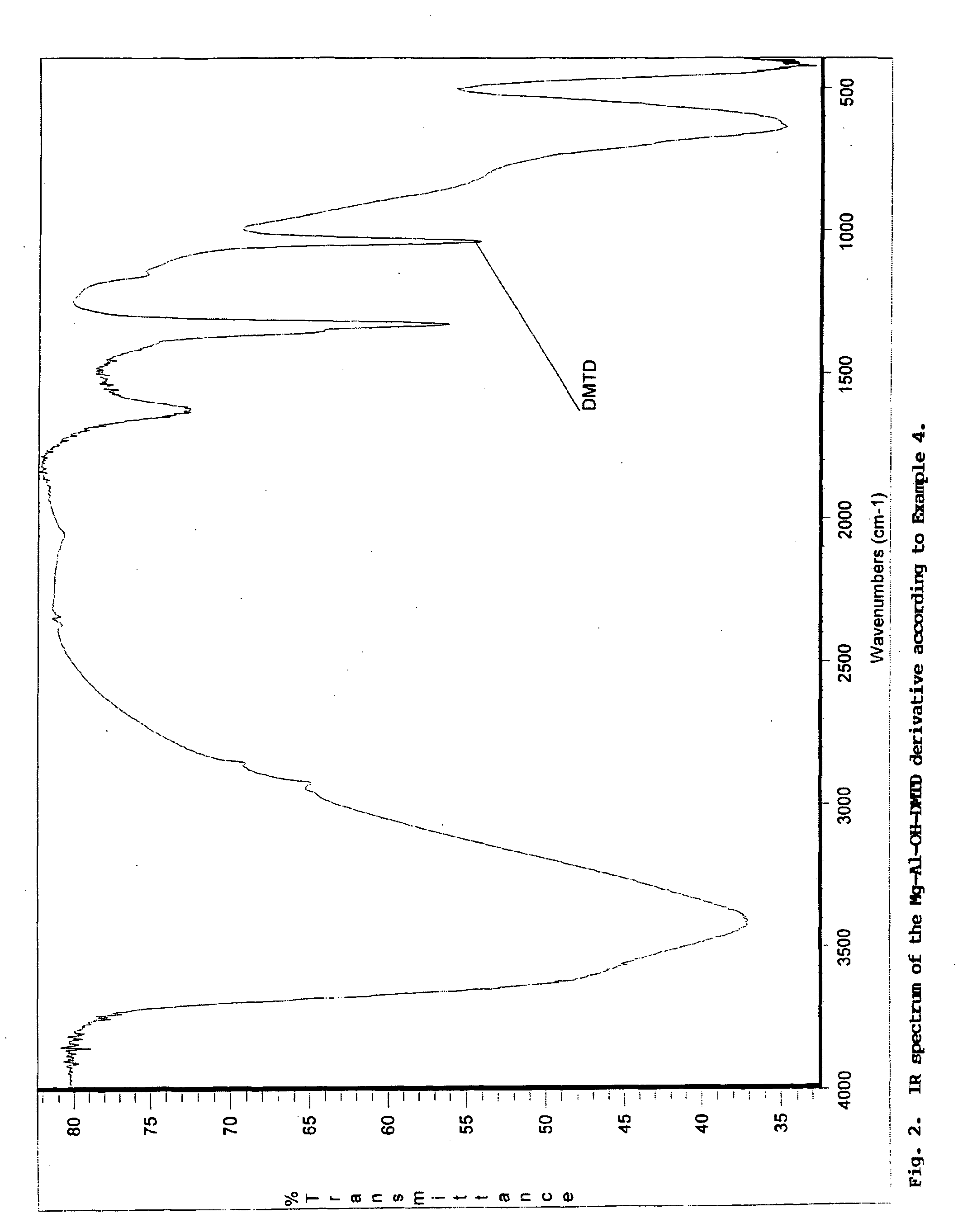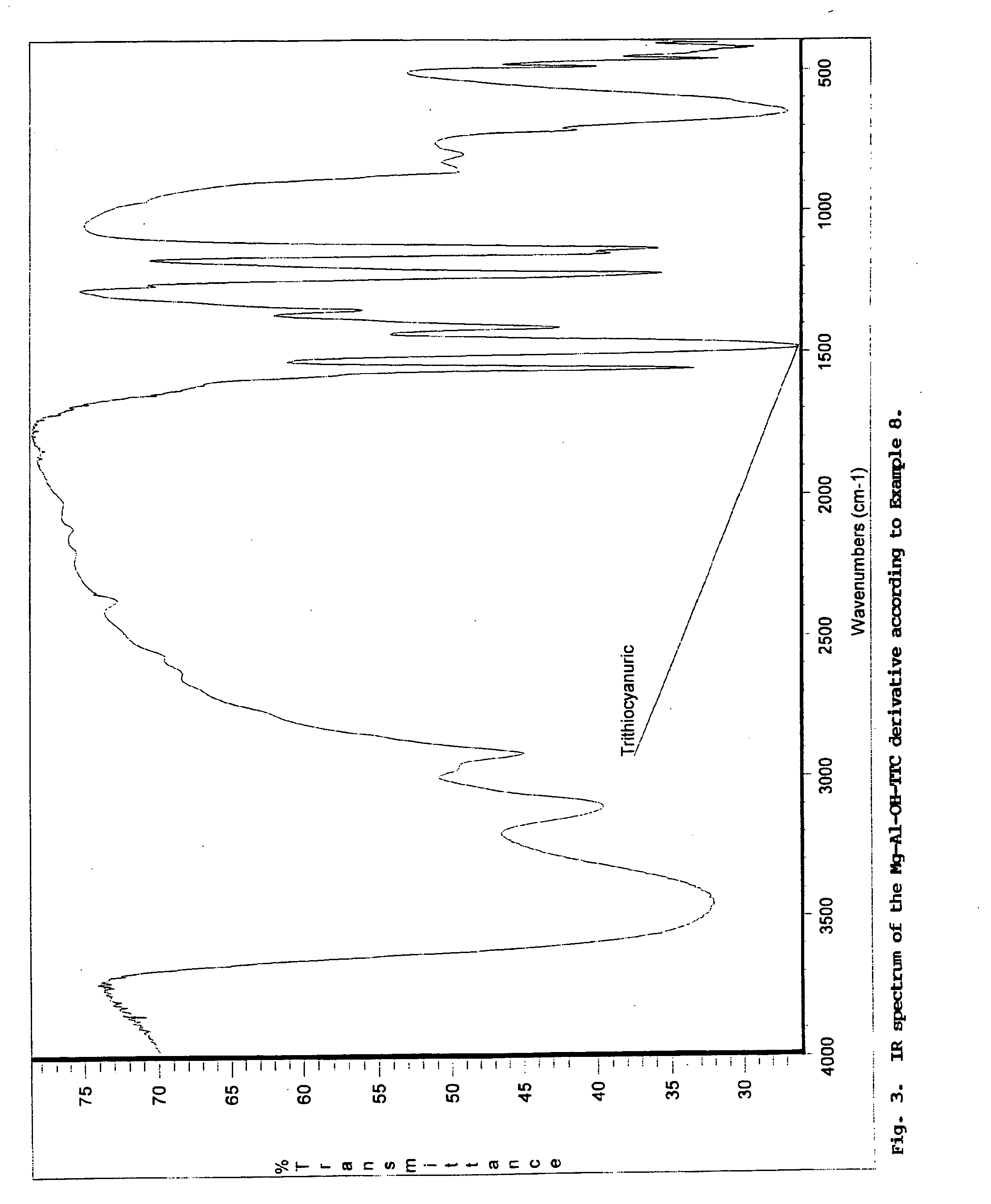Pigment grade corrosion inhibitor host-guest compositions and procedure
a corrosion inhibitor and host-guest technology, applied in the field of pigment grade host-guest compositions, can solve the problems of limited patents, inability of inorganic chemistry to produce effective, non-toxic alternatives to crosub>4, and less effective inhibitors of corrosion above-specified species, and achieve effective corrosion, inhibit cathodic o2 reduction, and high chemical
- Summary
- Abstract
- Description
- Claims
- Application Information
AI Technical Summary
Benefits of technology
Problems solved by technology
Method used
Image
Examples
referential examples
The following examples are references to be used in formulating specific examples and test subjects to be used in connection with specific examples listed in the EXAMPLE section.
referential example 1
This example is intended to disclose one synthesis procedure applicable for incorporating DMTD into a complex solid matrix corresponding to the general composition of 45% Zn(DMTD)2 / 32% Zn3(PO4)2 2H2O / 23% ZnO.
In practice, the synthesis was carried out as follows:
6.33 moles (515.0 g) of high grade ZnO (0.25 micron average particle size), was re-slurried in 2000 ml water at 50-60° C. and intense agitation for 1 (one) hour. After that, 1.5 moles of H3PO4, as 50% solution, were introduced gradually into the ZnO slurry and the same conditions were continued for 30 minutes. Subsequently, an aqueous suspension of 2.5 moles of DMTD in 1500 ml water was introduced in about 30 minutes. The intensively stirred slurry was heated to 75-80° C. and the same conditions were maintained for 2 (two) hours. The solid phase was isolated by filtration, dried at 100-105° C. to 0.5-2% moisture content and pulverized.
Relevant analytical data are presented below, in Table A.
TABLE AMeasured quality pa...
referential example 2
Pigment grade Sr-doped amorphous silica of SrSiO3.11SiO2.5.7H2O composition, containing approximately 9.5% Sr species, was synthesized according to the following procedure:
Initially, solution A was prepared by reacting 0.51 mole of SrCO3 and 3.5 moles of HNO3 and dissolving the composition in 1300 ml of water. Solution B was prepared by dissolving 1.9 moles of sodium silicate of Na2O(SiO2)3.22 composition (from Hydrite Chemical Co., WI.), in 900 ml of water.
Solutions A and B were delivered simultaneously and with identical rates for approximately 1 (one) hour into 500 ml of intensively stirred water at 70-85° C. At the end, the pH was adjusted to 8-8.5 and the same conditions were maintained for an additional 2 (two) hours, after which the resultant solid phase was separated by filtration, washed to soluble salt-free conditions, dried at approximately 105° C. overnight, and pulverized.
Relevant analytical data and IR spectrum results are presented below in Table B and FIG. 7, ...
PUM
| Property | Measurement | Unit |
|---|---|---|
| Molar density | aaaaa | aaaaa |
| Structure | aaaaa | aaaaa |
| Ratio | aaaaa | aaaaa |
Abstract
Description
Claims
Application Information
 Login to View More
Login to View More - R&D
- Intellectual Property
- Life Sciences
- Materials
- Tech Scout
- Unparalleled Data Quality
- Higher Quality Content
- 60% Fewer Hallucinations
Browse by: Latest US Patents, China's latest patents, Technical Efficacy Thesaurus, Application Domain, Technology Topic, Popular Technical Reports.
© 2025 PatSnap. All rights reserved.Legal|Privacy policy|Modern Slavery Act Transparency Statement|Sitemap|About US| Contact US: help@patsnap.com



